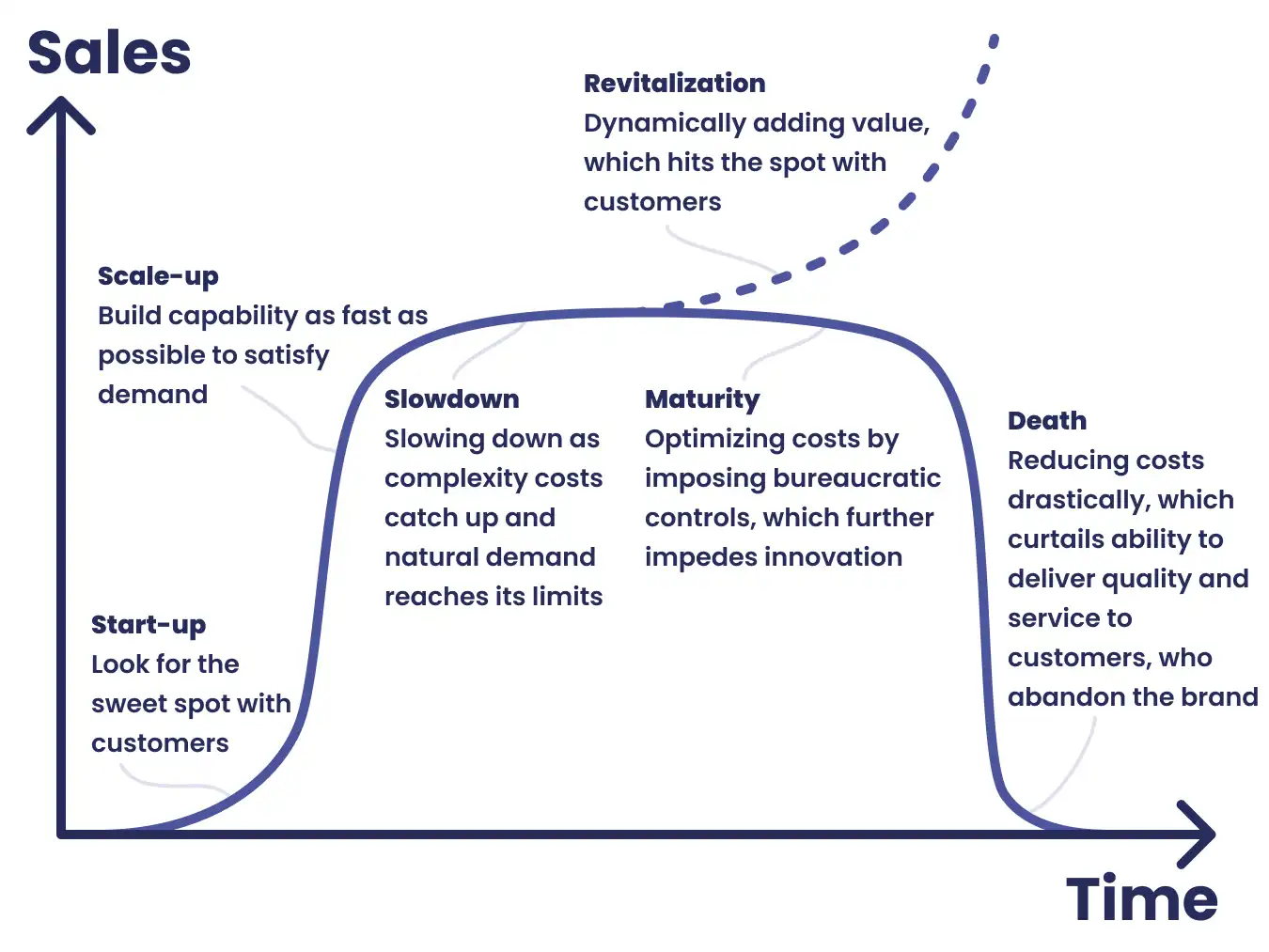Breaking the sales addiction: rethinking growth
Should we invest in sales or product capabilities? Sandrine argues for a healthy balance.

Startups are navigating a changing climate, where attracting investment requires not only a compelling idea but also a clear path to swift profitability and robust growth. In this more demanding environment, leaders are under pressure to jumpstart sales immediately. Take, for instance, the journey of a high-tech startup CEO at a pivotal juncture: despite seven years of remarkable growth fuelled by two successful products, the company is now facing stagnating revenue and slipping back into the red. Under immense pressure from investors to revitalize sales and financial health, drastic measures are taken, including layoffs of several managers, starting with the sales director. With no alternatives left, the CEO steps in to lead the sales efforts personally, hoping to secure new contracts and save her position.
While this hands-on approach may temporarily reassure investors with a surge in sales, the CEO discovers deeper issues during her interactions with prospects and the sales team. The sales force is floundering with product promotion to grab customers’ attention, and the offerings no longer captivate customers as effortlessly as before.
This scenario is not unique; it highlights a phenomenon known as the "Iron Law of scale" identified in the Lean Strategy. Initially, a startup’s commercial and product efforts are closely aligned, each sale and product feature fine-tuned in a do-or-die quest to meet customer needs. However, as the startup transitions to a scale-up, the operational model often shifts towards a more compartmentalized, Taylorist structure—dividing thinkers, doers, and administrators. The founder, once deeply involved in sales, retreats to capitalize on the initial product success, viewing product development as a cost rather than an investment. This detachment from sales, often accompanied by the challenging process of assembling a management team, can signal the onset of stagnation when the market matures.

The question then arises: how should a company reignite growth? Should it bolster the sales force, push hard on up-sell and cross-sell strategies, or perhaps pivot attention to cost-cutting for slower-moving products? Is it wise to venture into new, possibly international markets despite the complexity and cost, or might it be better to innovate with a new product, despite the delayed ROI? Well, this depends on the market conditions and your internal situation. We need to consider at both.
Our CEO is fixated on the belief that the sales decline is purely a problem of salesmanship. She fails to recognize the mounting customer service issues, the growing complexity of the flagship product, and the customers’ hunt for alternatives. She is preoccupied with driving sales, offering trial periods, and commissioning free custom prototypes. Yet, she ultimately observes that despite an initial spike in sales, customer engagement wanes, and the aggressive discounting tactics erode profitability.
To foster growth, the dilemma is whether to invest in products or sales capabilities. Both are undeniably vital. However, an overemphasis on sales offers only a temporary reprieve. Sustained growth hinges on continuous product development—products that are not only innovative but also attuned to customer problems and fast-changing market trends.
The lean approach advocates for a strategic product range. A diverse range allows customers to find exactly what they need within the brand's portfolio, encouraging loyalty and the philosophy of "once a customer, always a customer." Instead of wringing each product dry, the focus should be on advancing both sales and product fronts, introducing new offerings regularly to stay relevant to customer interests. I refer to this as vertical and horizontal innovation. Vertically, we enhance our existing products at regular intervals to stay relevant. Horizontally, we broaden our product lines to explore and capture new market segments.
The real secret to growth lies not in short-term commercial gimmicks but in a strategy where commercial activities and product evolution are in constant synergy. This approach fosters a product range that continuously appeals to customers, encouraging repeat business. To truly progress and scale, it's crucial to balance the approach, to not just hop on one leg—sales or product development—but to march forward confidently on both.
Translated from an article originally published on Institut Lean France.